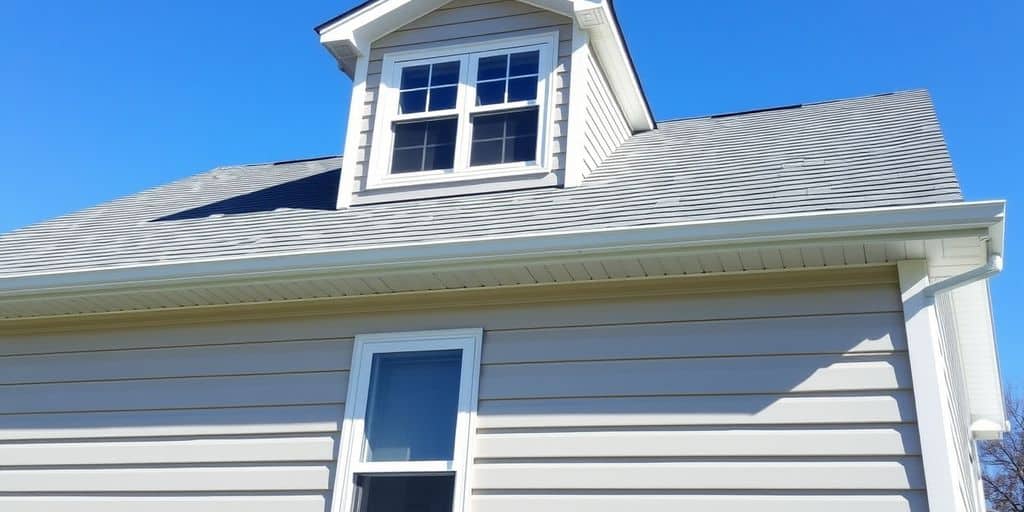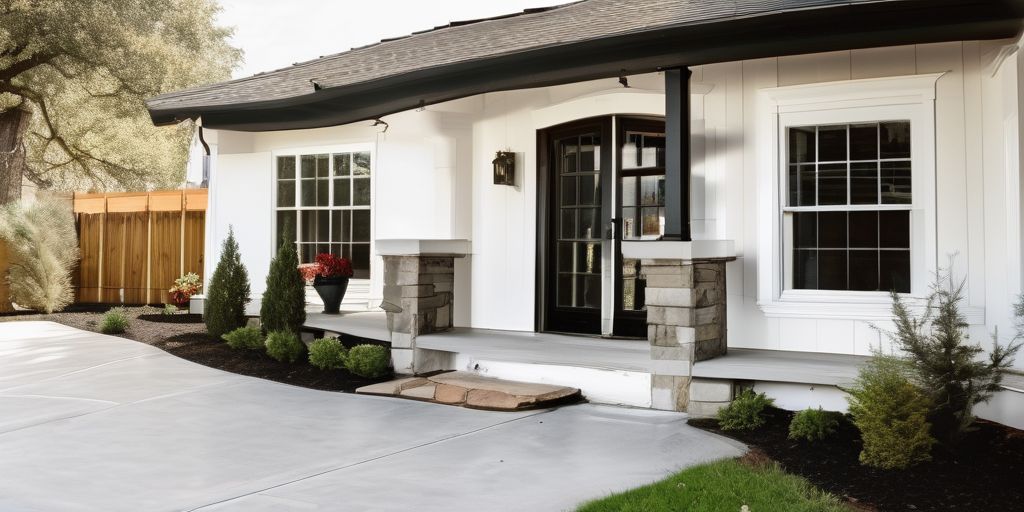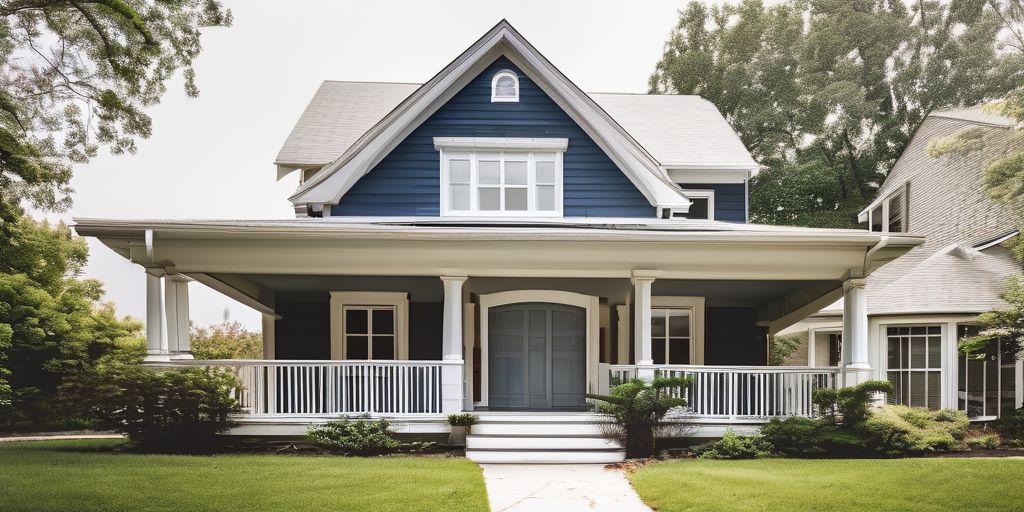Painting aluminum siding in Etobicoke can be tricky because of the changing temperatures. These fluctuations can affect how well the paint sticks and lasts. Knowing how to manage these temperature changes is key to getting a smooth and durable finish. This guide will help you understand the impact of temperature on painting aluminum siding and give you tips for a successful paint job.
Key Takeaways
- Always check the weather forecast before starting your painting project.
- Clean and repair the siding thoroughly before painting.
- Choose high-quality paint that is suitable for aluminum siding.
- Avoid painting in extreme temperatures, either too hot or too cold.
- Work in smaller sections to manage drying times and temperature changes.
Understanding the Impact of Temperature on Aluminum Siding Paint
Why Temperature Matters
Temperature plays a crucial role in painting aluminum siding. Extreme temperatures can affect the paint’s ability to adhere properly and cure correctly. Here are some reasons why temperature is important:
- Paint can dry too quickly in high temperatures, leading to cracks and peeling.
- In low temperatures, paint may not dry at all, causing it to sag or run.
- Temperature fluctuations can lead to uneven finishes and reduced durability.
Effects of Temperature Fluctuations
Temperature fluctuations can have several negative effects on your paint job:
- Adhesion Issues: Paint may not stick well to the surface, leading to peeling and chipping.
- Uneven Drying: Different parts of the siding may dry at different rates, causing an inconsistent finish.
- Reduced Durability: Paint exposed to frequent temperature changes may not last as long.
Ideal Temperature Range for Painting
For the best results, aim to paint your aluminum siding within the ideal temperature range:
- Optimal Range: 50°F to 85°F
- Avoid painting in temperatures below 50°F or above 85°F.
- Check the weather forecast to ensure stable conditions during your painting project.
Remember, maintaining the right temperature is key to a successful paint job. Keep an eye on the weather forecast and plan your painting schedule accordingly.
Preparing Your Aluminum Siding for Painting
Cleaning the Surface
Before you start painting, it’s crucial to clean the aluminum siding thoroughly. This step ensures that the paint adheres properly and lasts longer. Here’s how you can do it:
- Power Wash: Use a power washer to remove dirt, grime, and chalky residue. Start on a lower setting to get used to the intensity.
- Detergent Solution: Mix bleach and water, or use a good detergent or TSP from your local hardware store to clean the surface.
- Scrubbing: If you don’t have a power washer, a regular bristle brush and some elbow grease will do the trick.
Repairing Damages
Inspect the siding for any dents, holes, or other damages. Repairing these issues before painting is essential for a smooth finish.
- Caulking: Fill in any small dents or holes with caulk.
- Patching: For more heavily damaged panels, consider patching or replacing them.
Priming the Siding
Priming is a critical step that shouldn’t be skipped. A good primer will help the paint adhere better and last longer.
- Choose the Right Primer: If your paint doesn’t have a built-in primer, opt for an oil-based or metal etching primer.
- Application: Apply the primer evenly, using a sprayer or roller. One coat is usually enough, but you can apply a second coat if needed.
Proper preparation is key to a successful painting project. Taking the time to clean, repair, and prime your aluminum siding will ensure a long-lasting and beautiful finish.
By following these steps, you’ll be well on your way to achieving a professional-looking paint job that enhances the curb appeal of your home.
Choosing the Right Paint for Aluminum Siding
Types of Paints Suitable for Aluminum
When it comes to painting aluminum siding, selecting the right type of paint is crucial. Here are some options to consider:
- Acrylic Paint: This is often recommended for aluminum siding due to its excellent adhesion properties and resistance to fading and chalking. It adheres well to metal surfaces and provides excellent durability.
- High-Quality Latex Paint: This type of paint is also suitable, offering easy cleanup and less odor during application.
- Paints with Additives: For enhanced protection, look for paints that include anti-mildew and UV-blocking additives.
Benefits of High-Quality Paint
Using high-quality paint can make a significant difference in the longevity and appearance of your aluminum siding. Here are some benefits:
- Durability: High-quality paints are more durable and can withstand harsh weather conditions.
- Better Finish: They provide a smoother and more even finish, enhancing the aesthetic appeal of your home.
- Easier Maintenance: High-quality paints are easier to clean and maintain, saving you time and effort in the long run.
Color Considerations
Choosing the right color for your aluminum siding is not just about aesthetics; it also affects the performance of the paint. Here are some tips:
- Lighter Shades: These tend to reflect sunlight and can help in reducing heat absorption, which is particularly beneficial during hot summers.
- Darker Colors: While they may look striking, darker colors may fade more quickly and could lead to higher surface temperatures.
Remember, the right sheen can make a significant difference. A satin or semi-gloss finish is typically best for hiding imperfections and facilitating cleaning.
By carefully selecting the right type of paint, you can ensure a long-lasting and beautiful finish for your aluminum siding.
Techniques for Painting in Variable Temperatures
Painting aluminum siding in Etobicoke can be tricky due to the variable temperatures. Here are some techniques to help you achieve a smooth and durable finish.
Working in Sections
When dealing with temperature fluctuations, it’s best to work in smaller sections. This allows you to manage the drying time more effectively and ensures that the paint adheres properly. Working in sections also helps you maintain a consistent finish, even if the temperature changes suddenly.
Timing Your Painting Sessions
Timing is crucial when painting in variable temperatures. Aim to paint during the cooler parts of the day, such as early morning or late afternoon. This helps avoid the extreme heat that can cause the paint to dry too quickly. Keep an eye on the weather forecast to plan your painting sessions around more stable temperature conditions.
Using the Right Tools
Using the right tools can make a significant difference when painting in variable temperatures. High-quality paintbrushes and rollers are essential for achieving a smooth finish. For larger areas, consider using a paint sprayer. This method provides faster coverage and a more even coat. Remember, proper preparation and understanding of each method’s advantages are crucial for a successful outcome.
Adapting to temperature changes requires flexibility and attention to detail. By making small adjustments and staying informed about the weather, you can achieve a professional finish regardless of the temperature variations.
Maintaining Your Painted Aluminum Siding
Regular Cleaning Tips
To keep your painted aluminum siding looking fresh, regular cleaning is essential. Here are some tips:
- Use a mild detergent mixed with water to clean the surface.
- Avoid abrasive scrubbers that can damage the paint.
- Rinse thoroughly with a garden hose to remove soap residue.
- Clean at least twice a year, preferably in spring and fall.
Inspecting for Wear and Tear
Regular inspections help catch issues early. Look for:
- Peeling or chipping paint
- Signs of oxidation, like a chalky residue
- Any dents or physical damage
Addressing these issues promptly can extend the longevity of your siding.
Touch-Up and Repainting Guidelines
Touch-ups and repainting are crucial for maintaining the appearance and protection of your siding:
- Clean the area thoroughly before applying any paint.
- Use the same type and color of paint for touch-ups to ensure consistency.
- For larger areas, consider repainting the entire section to avoid noticeable differences.
- Ensure the weather conditions are ideal for painting—temperatures between 50°F and 85°F with low humidity are best.
Regular maintenance not only keeps your siding looking great but also helps in preserving its durability against the elements.
By following these steps, you can ensure your painted aluminum siding remains in top condition for years to come.
Common Mistakes to Avoid When Painting Aluminum Siding
Painting aluminum siding can be a rewarding project, but it’s easy to make mistakes that can affect the final result. Here are some common pitfalls to avoid:
Ignoring Weather Forecasts
One of the biggest mistakes is not paying attention to the weather. Painting in extreme weather conditions can lead to poor adhesion and uneven drying. Always check the forecast and aim to paint on days with mild temperatures and low humidity.
Skipping Surface Preparation
Proper surface preparation is crucial for a long-lasting paint job. This includes cleaning the siding thoroughly to remove dirt, grime, and oxidation. Failing to do so can result in poor paint adhesion and a less durable finish.
Using Inappropriate Paint
Not all paints are suitable for aluminum siding. Using the wrong type of paint can lead to peeling and fading. Opt for high-quality acrylic or latex paints designed for metal surfaces. These paints offer better adhesion and durability.
Remember, the right paint can make a significant difference in the longevity and appearance of your siding.
By avoiding these common mistakes, you can ensure a smoother, more durable paint job for your aluminum siding.
Expert Tips for a Long-Lasting Paint Job
Monitoring Weather Conditions
Keeping an eye on the weather is crucial. Always check the weather forecast before starting your painting project. Aim to paint when temperatures are between 50°F and 85°F with low humidity. This helps the paint adhere better and dry properly.
Applying Multiple Coats
For a durable finish, apply multiple coats of paint. Start with a primer, followed by at least two topcoats. This not only enhances the color but also provides extra protection against the elements.
Ensuring Proper Drying Time
Allow each coat to dry completely before applying the next one. In cooler temperatures, the paint may take longer to dry, so be patient. Proper drying time ensures a smooth and even finish.
Remember, maintaining the right temperature is key to a successful paint job. Keep an eye on the weather forecast and plan your painting schedule accordingly.
By following these expert tips, you can achieve a long-lasting and beautiful paint job for your aluminum siding in Etobicoke.
Want your paint job to last for years? Start with the right prep work and use top-quality products. Our team at We Paint Siding knows exactly how to make your home look amazing and stay that way. From cleaning to the final coat, we handle it all. Ready to transform your home? Visit our website for a free estimate today!
Conclusion
In the end, managing temperature changes when painting aluminum siding in Etobicoke is all about planning and attention to detail. By keeping an eye on the weather, using the right paint, and applying it correctly, you can make sure your siding looks great and lasts a long time. A good paint job not only makes your home look better but also protects it from the weather. So, take your time, follow the steps, and happy painting!
Frequently Asked Questions
What is the best type of paint for aluminum siding?
Acrylic latex paint is the best choice for aluminum siding because it sticks well and lasts a long time.
Can I paint aluminum siding in cold weather?
It’s not a good idea to paint aluminum siding in cold weather. The paint might not stick well and could have trouble drying.
How can I handle temperature changes while painting?
To handle temperature changes, paint in smaller sections and avoid painting when the temperature changes a lot.
What tools do I need for painting aluminum siding?
You’ll need a good paintbrush, a roller, and a paint sprayer for bigger areas.
What are the best methods for applying paint to aluminum siding?
The best ways to apply paint are by brushing, rolling, or spraying in even, overlapping strokes.
How do I deal with temperature-related problems while painting?
Keep an eye on the weather, paint during the best temperature ranges, and avoid painting in really hot or cold weather.





